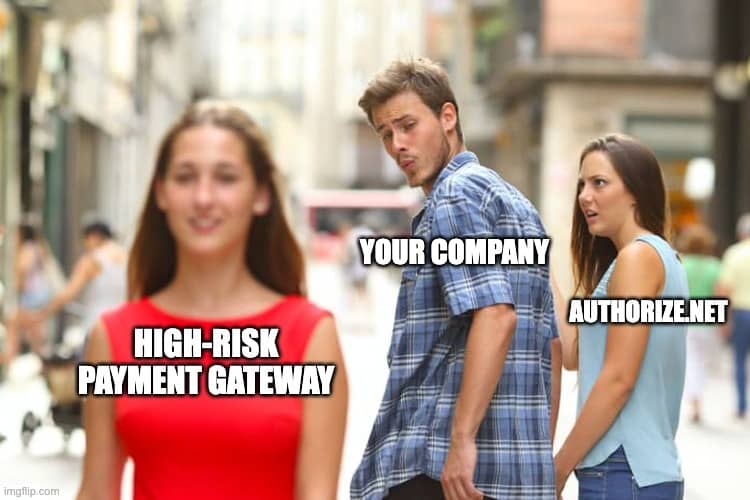What's A Payment Processor?

Businesses that accept credit card payments from their customers regularly may not think much about it. But, as a business owner, it’s essential to understand the payment processing process, particularly when problems arise. Comprehending “payment processor” and the four related payment processing terms is vital.
Table of Contents
-
- What’s a Payment Processor?
-
- What’s an Acquirer?
-
- Who’s an Issuer?
-
- What Does It Mean to be PCI-Compliant?
-
- What Are EMV Chip Credit Cards?
- What Does a Payment Processor Do?
- The Procedure for Payment Processing
- Differences Between Payment Service Providers and Merchant Acquirers
- Expense Incurred by Credit Card Transactions
- Selecting the Right Payment Processor for You
- Is the cost right for your business?
- Where do you accept payments?
- What’s your industry?
- What if you want to switch payment processors?
#1. What’s a Payment Processor?
The role of a payment processor is to be the liaison between retailers and financial institutions for credit card transactions. They can grant authorization and guarantee that merchants receive payments promptly by facilitating the money transfer. Some payment processing services offer additional support, such as providing hardware for card acceptance, security solutions, [PCI compliance aid and customer support.
Rather than a payment processor, a payment gateway is a secure program that enables the authentication of credit card or direct payments for online sales and other types of cardless transactions.
#2. What’s an Acquirer?
The acquiring financial institution, or merchant bank, is the entity that holds a merchant’s account and can process credit card payments. This entity is sometimes referred to as the acquirer. In some instances, the payment processor and the acquirer are the same.
#3. Who’s an Issuer?
The institution issuing the card, otherwise known as the issuing bank, is responsible for settling the payments made by the cardholder to the acquirer (and thus the merchant) in the event of a successful credit card transaction. Additionally, the issuer is in charge of collecting payments from the cardholder.
#4. What Does It Mean to be PCI-Compliant?
The Payment Card Industry Data Security Standard (PCI DSS) is an information security standard that applies to all involved in handling payment card information. Those who accept card payments must comply with the PCI regulations, or they put themselves at risk of a data breach with the associated consequences of fines, fees and a decrease in business. To be PCI compliant, all businesses must meet the rules and regulations set forth by the PCI DSS.
PCI requirements can be challenging due to the various aspects involved. To help their merchants, certain payment processors offer a range of services such as security checklists, assistance with implementation, breach guarantee and more. Therefore, it is advisable to collaborate with a payment processor specializing in providing comprehensive PCI compliance support, considering the frequent updates to PCI standards.
#5. What Are EMV Chip Credit Cards?
EMV chip credit cards are a type of payment card with an embedded integrated circuit chip that stores and protects cardholder data. It’s a more secure way to pay than the traditional magnetic stripe cards.
Since 2015, the usage of EMV chip cards has become more common due to a fraud chargeback liability shift. This shift placed new obligations on merchants for card-present fraud. If a company processes a chip card without an EMV-compatible terminal, it may be held liable for any resulting fraud.
Unlike PCI, EMV is not mandatory, yet it is an important tool in helping to reduce card-present fraud and chargeback rates. Still, it should be noted that EMV does not protect against a data breach - that’s where PCI comes into play. Merchants should look into their payment processor’s EMV and PCI compliance solutions.
Now that you have a good understanding of the essential terms related to payment processing, it is time to ensure you have the most suitable payment processor for your business. A reliable and experienced payment processor will offer the data, resources, and advice you need to accept card payments securely.
What Does a Payment Processor Do?
Merchants depend on a payment processor to take care of the details of accepting card payments. This processor sends card information from the point where customers provide their credit card numbers to the payment networks and banks taking part in the transaction, such as Visa, Mastercard, American Express and Discover.
Your business must have a payment processor if you accept card payments. Companies like Square offer payment processing, point-of-sale systems and hardware. Zenti offers payment processing solutions to a broader market including specialization in high-risk industries and personalized US-based customer support. (You can call us and talk to an actual person in minutes!)The ideal choice for your company essentially depends on your sales volume and how you accept payments.
Zenti is a payment processor that’s specifically tailored to cater to your business requirements.
The Procedure for Payment Processing
Payment processing involves a series of steps that must be completed to authorize and process a payment successfully. These steps involve the customer, merchant and payment processor and include the following:
- The customer initiates a purchase by entering their payment information.
- The merchant’s system sends a request to the payment processor.
- The payment processor authenticates the customer’s payment information and requests authorization from the customer’s bank.
- The customer’s bank approves or denies the payment and notifies the payment processor.
- The payment processor notifies the merchant of the payment status and transfers the funds.
- The merchant notifies the customer of the payment status.
To facilitate a card payment transaction, a payment processor must transfer funds from the consumer’s account to the business’s. This is how it works:
- When making a purchase, customers supply the merchant with their card details. This can be done in-store at a terminal, on a payment page on the web or using an alternative method. These details are then sent through the payment gateway, an intermediary system for processing payments which is sometimes accompanied by payment processing services.
- After the payment gateway transmits the data, a payment processor starts the transaction by sending the same information to a card network like Mastercard or Visa for authorization.
- The card network notifies the payment processor if the payment request is accepted.
- The merchant finalizes the customer’s purchase.
Upon completion of the transaction, the payment processor notifies the bank that issued the customer’s card (the issuing bank) to transfer funds to the merchant’s bank (the acquiring bank). The seller will receive the money from the sale immediately or within a few business days, based on the payment system and the destination of the funds.
Differences Between Payment Service Providers and Merchant Acquirers
The last stage of the transaction is receiving payment. You can have two distinct accounts: a merchant account (offered by a merchant acquirer) or a payment service provider account.
Businesses utilizing merchant accounts
This phrase is intended to refer to companies that have taken the necessary steps to set up accounts with credit card processors. This allows them to accept payment via credit cards, debit cards, and other electronic payment methods.
When a card payment is made, the funds are transferred from the customer’s bank (the issuing bank) to the merchant account of the business that made the sale. Generally, it may take a few days for the money to be available to the account holder of the business, although certain financial institutions may offer advance access.
Businesses from any scale can open a merchant account. Various banks provide this service, from large banks such as Chase to those specializing solely in merchant accounts like Zenti.
Accounts offered by payment service providers
If you opt to utilize a payment service provider like Square, you don’t have a merchant account of your own. Instead, the payment service provider has a merchant account that receives payments for your business and many other businesses. The funds you receive get sent to a secondary account that you have with the payment service provider.
There are a lot of payment service providers that have amenities that you may not get with a merchant account, such as immediate access to finances. Yet, because the payment service provider is the ultimate proprietor of the merchant account, certain parts of authority are transferred. For instance, if a payment service provider believes your business to be too hazardous, your account access may be hindered or shut down completely.
Expense Incurred by Credit Card Transactions
The construction, upkeep and running of networks that transmit monetary funds and data require expenditure. Consequently, the firms responsible for these operations—card issuers, networks and payment processors—charge merchants for utilizing these networks and services.
The payment processor charges merchants a fee for every transaction, taking a percentage as a cut before distributing the rest. This fee, known as the merchant discount rate, typically amounts to 2-3% of the total purchase and comprises of:
- Approximately three-quarters of the total costs in card transactions consist of interchange fees. The card networks establish the fee rate, and the money goes to the bank that issued the card. For instance, if someone used a Citi Mastercard credit card, Mastercard would set the interchange fee, and Citi would receive it. The amount charged for each transaction may differ based on the card type, the merchant’s industry and how the card is used (in person or online). More than 700 interchange rates are available, although their differences may be slight.
- Fees and dues for evaluation are remitted to the card network, such as American Express or Discover. The fee depends on the overall gross sales of the month, with a differential for international sales, the kind of card used to pay (debit or credit) and other elements.
- Processor/acquirer fees compensate the payment processor.
Selecting the Right Payment Processor for You
Choosing the appropriate payment processor can be a challenging task. It is important to assess your business needs and determine the best payment processor for your particular situation. You should consider factors such as transaction fees, customer service and processing speed when making your decision. Additionally, ensuring that the payment processor is compatible with your current software and hardware is wise. You can find the payment processor that best meets your needs by researching and comparing the various options available.
Before selecting a payment processor, one should contemplate the following questions.
Is the cost right for your business?
When deciding on the proper cost framework for an organization, the deciding factors are the sector it belongs to, the amount of sales made and the concessions they are happy to accept. Three common kinds of pricing can be seen in this regard.
Interchange-plus pricing is structured as the interchange rate with an added markup. This markup could be presented as a percentage, a flat fee, or a combination. For instance, it could be the interchange rate plus fifteen cents for each transaction.
- Advantages: Compared to tiered or flat-rate pricing, this approach can be more cost-effective for enterprises with large sales numbers.
- Drawback: With hundreds of interchange fees, sellers may observe discrepancies in their expenses as interchange fees can differ from transaction to transaction.
A flat-rate fee structure entails one uniform cost for all purchases accepted in a specific manner, not affected by the interchange rate. For instance, an individual may be charged 2.3% plus 15 cents for in-person transactions and 3% in addition to 30 cents for online transactions.
- Advantages: Flat-fee rates are uncomplicated and foreseeable.
- Con: For those companies with large amounts of sales, the total expenses of this type of pricing structure can be greater than interchange-plus pricing.
A combination of interchange-plus and flat-rate pricing is known as tiered pricing. Interchange rates are categorized into different tiers, and payment processors charge a fee for every one. An example could be a payment of 1.7% plus 25 cents for debit cards and 3% plus 30 cents for a rewards card with a higher rate.
- Advantages: Expenses are more foreseeable than interchange-plus costs, and in specific scenarios, the rates can be more economical than flat-rate pricing.
- Drawback: Compared to interchange-plus fees, the total expenses may be higher, particularly concerning transactions judged to be particularly hazardous to processors, like online payments.
For those looking for the most affordable credit card processing companies for small businesses, check out this article from Zenti.
It is also important to take into consideration other pricing factors:
- Some payment processors’ costs are available for viewing on their websites. Others, however, provide quotes for pricing upon request.
- A single payment processor may provide multiple rates depending on a customer’s subscription level, industry type or sales volume.
- To cover the elevated risk of deceit, payment processors often assess a greater fee for purchases done via the web.
- Utilizing point-of-sale terminals may be a cost that needs to be accounted for. Some vendors will let you use your device. Others require the use of their hardware. Also, some businesses will let you purchase the items or enter into a rental agreement.
Where do you accept payments?
Do your clients make payments via the internet? Are they doing it at a store? Or do you take your venture out of the office? Payment processors, such as Stripe, are mainly made for e-commerce. On the other hand, Square has multiple pieces of equipment available for businesses that operate in person. This can be an influential factor, but the distinction here is more related to the payment gateway than the payment processing itself.
What’s your industry?
Payment processors may not offer services to certain businesses due to risks associated with regulations or finances. Industries that are commonly not serviced by payment processors, but Zenti works with, are those with the following:
- A significant number of credit card frauds occurring, particularly at gas stations.
- Many disputes are present in fields such as infomercials or telemarketing sales.
- Transactions involving items governed by national or state statutes, like firearms or cannabis.
For businesses in particular industries, the options for payment processors may be more restricted.
What if you want to switch payment processors?
A few payment processors offer no-contract arrangements without penalty for ending the agreement. Depending on the service, you may or may not retain your customer data should you choose to use a different vendor. This could mean that if you switch, you may need to start fresh. Our team at Zenti can walk you through it! Contact us now to get the payment processor you deserve.
Read Next

Find out whether Authorize.Net works for high risk merchants, what restrictions you might face and how to get approved.

Get expert advice on selling CBD products on Shopify, including compliance tips and setting up secure payment options.

Find out why Square may deactivate merchant accounts and steps to resolve issues and maintain uninterrupted payment services.
Need a High-Risk Merchant Account?
Disruption-free payment processing at the best price for your situation, guaranteed.
Get Free Guidance Now!